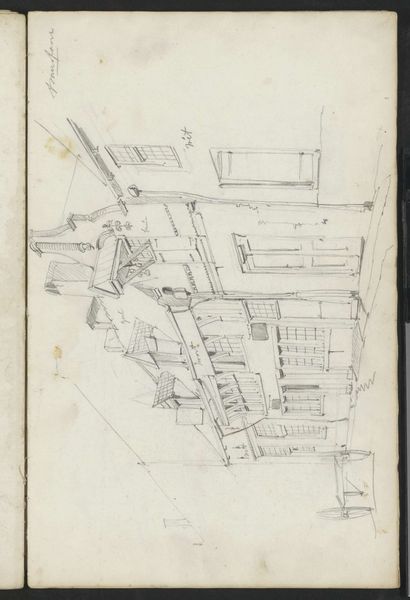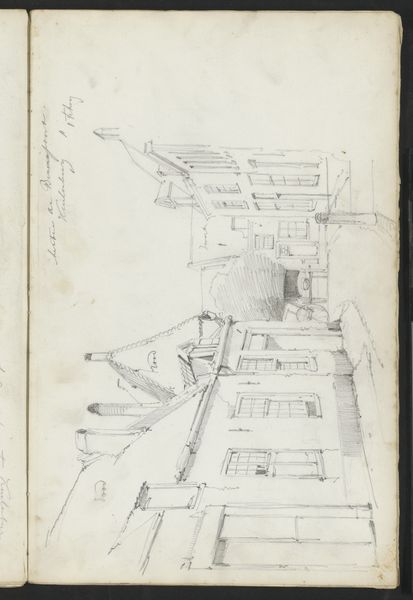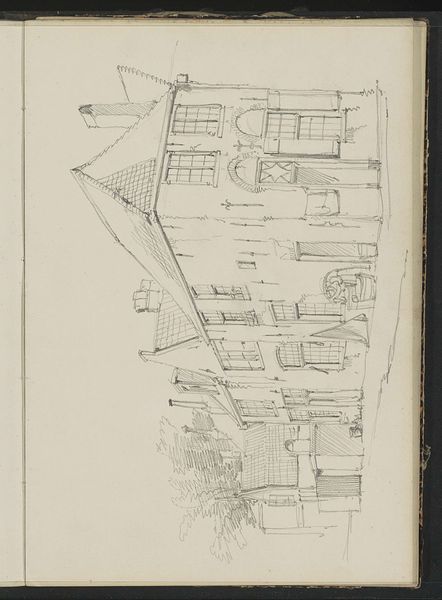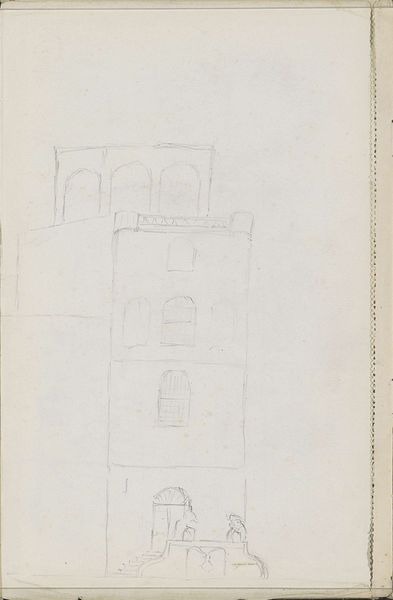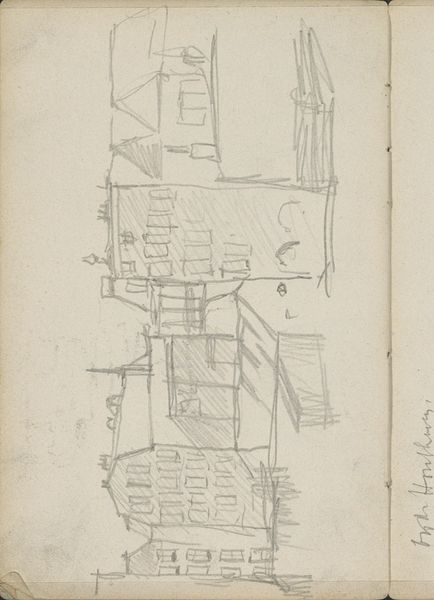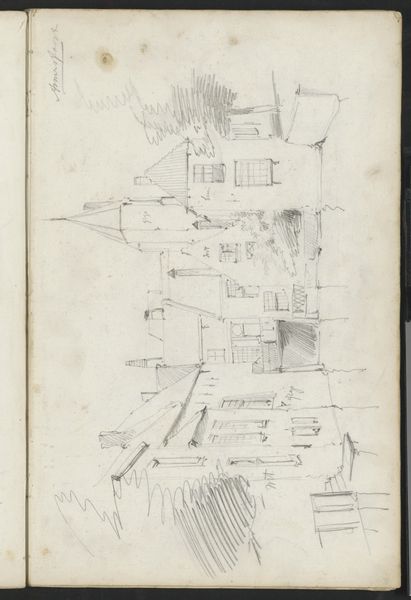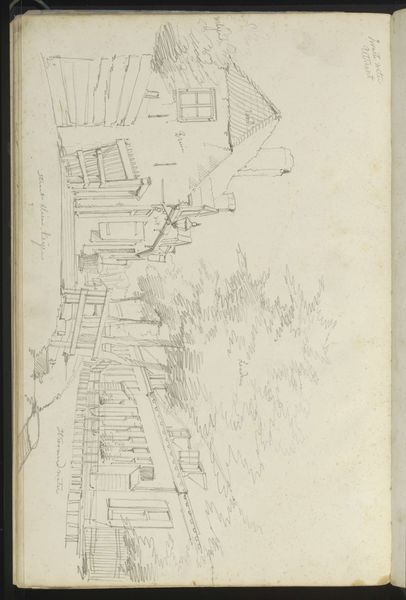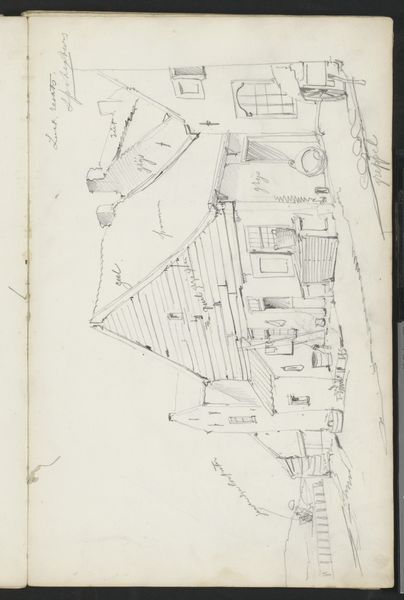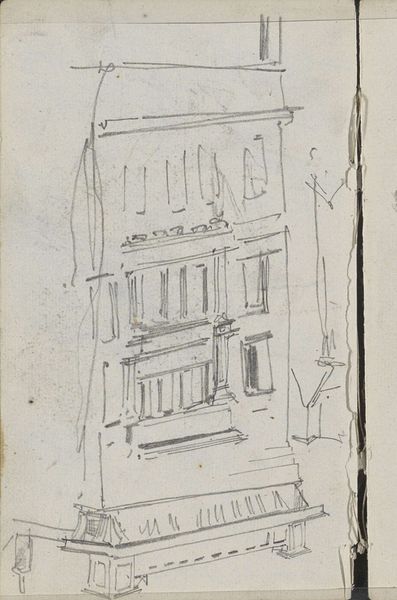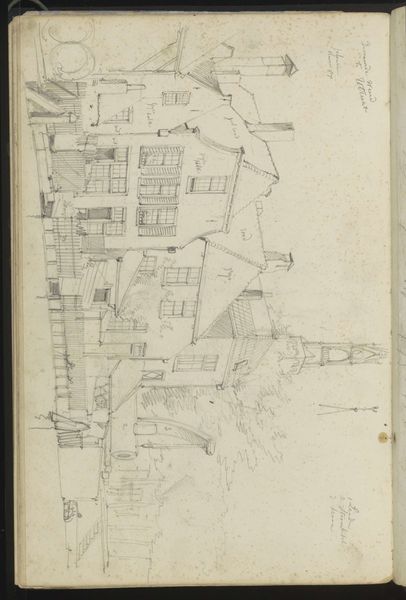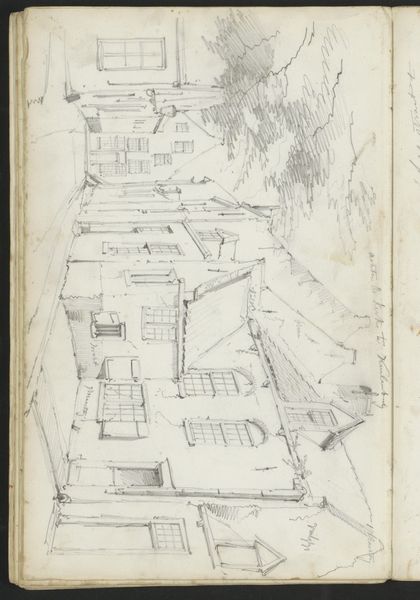
#
aged paper
#
toned paper
#
quirky sketch
#
sketch book
#
personal sketchbook
#
pen-ink sketch
#
pen work
#
sketchbook drawing
#
storyboard and sketchbook work
#
sketchbook art
#
street
Copyright: Rijks Museum: Open Domain
Editor: So, this is "Straatgezicht" - or street view - by Willem Koekkoek, dating from 1849 to 1895. It's an ink drawing on paper, found in a sketchbook. There's a rawness to it, the quick, visible strokes suggesting a fleeting moment captured. How do you approach a piece like this? Curator: The apparent casualness is quite deliberate. For me, a key question is, what kind of labour produced this image, for whom, and under what circumstances? The visible marks are evidence of artistic production. Given the sketchbook format, was this made en plein air, reflecting an engagement with the everyday realities of the city, or in the studio, drawing from memory or other sketches? Editor: That's a great point. I hadn’t considered the setting of production so explicitly. So, if it was done on-site, that's a record of the artist's immediate labour… but if it was done later, is it less 'authentic'? Curator: "Authenticity" is a slippery slope! I'd suggest the studio rendition becomes a form of *re*production, mediated by memory and other representational modes. Consider the material reality: ink, paper, portable sketchbook... these are relatively inexpensive tools, expanding artistic possibilities. Was the availability of materials affecting the democratisation of image-making at this time? Was there an expanded patronage with emerging markets or new groups of consumers? Editor: Wow, that’s really interesting! So it’s not just about *what* is shown, but the very process and context of how it was *made*. The easy access of these materials changes not only artistic practice, but potentially who gets to be an artist. Curator: Exactly. Consider then the networks through which these images circulate: sketchbooks exchanged among artists, prints produced after the sketch... a whole system of artistic and economic exchange comes into view. Editor: I hadn’t thought of that, considering art beyond the finished piece and considering all the steps involved in the art making and distribution. I’ll never look at sketches the same way again! Curator: Precisely! And by focusing on those processes and material conditions, we can rethink some fundamental assumptions about art and value.
Comments
No comments
Be the first to comment and join the conversation on the ultimate creative platform.
